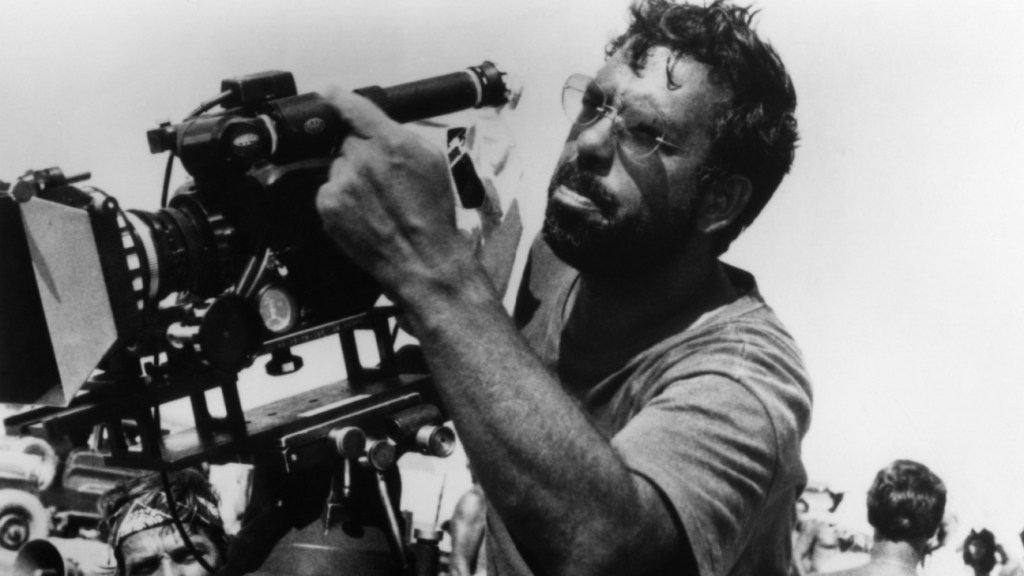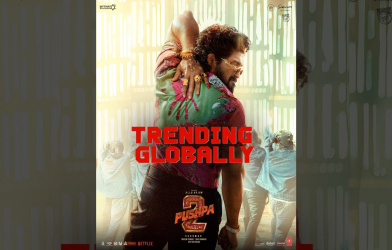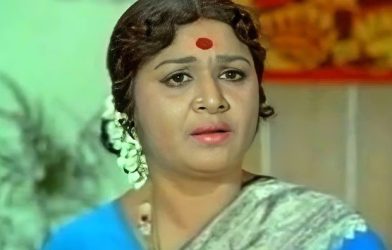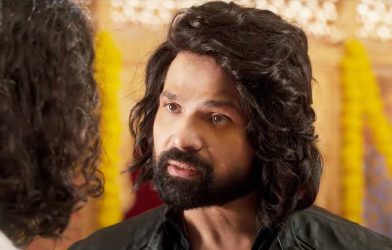
Francis Ford Coppola, on location filming ‘Apocalypse Now.’
Everett
For his forthcoming one from the heart, Megalopolis, Francis Ford Coppola has once again violated the cardinal rule of the entertainment business: never invest your own money in the show. Reports are that to bankroll the $120 million epic he has literally mortgaged the farm, or vineyard. The investment is slated to premiere at the Cannes Film Festival on May 14.
We — and he — have all been here before. Coppola last went into hock for another long-aborning and cost over-running project, which forty-five years ago, almost to the day, also premiered at Cannes: the now legendary Apocalypse Now (1979).
At the time, Coppola was bathing in the afterglow of one of the most astonishing back-to-back double, or triple, plays in the industry’s history: The Godfather (1972) and The Godfather: Part II (1974), the operatic two-part saga of mob family business in which organized crime serves less as a metaphor for American capitalism than its purest expression (“Michael, we’re bigger than U.S. Steel!”); and The Conversation (1974), a prophetic vision of the intrusion of high tech surveillance into private lives. Before Steven Spielberg’s Jaws (1975) and George Lucas’s Star Wars (1977) set the templates for the next half century of Hollywood cinema, Coppola was the singular visionary of what was already recognized as the Second Golden Age of Hollywood cinema.
Little wonder that Coppola’s next project was awaited with eager anticipation by most and, because this is after all Hollywood, knives out by a few.
In November 1975, United Artists and Coppola formally announced his new film was entitled Apocalypse Now, to be set in Vietnam and “loosely based” on Joseph Conrad’s novella Heart of Darkness, published in 1899. In the novella, a laconic seafarer named Marlow (Raymond Chandler added an “e” for his own laconic narrator, the shamus Philip Marlowe) recalls a serpentine journey by steamboat up the Congo River to the remote outpost of an ivory agent named Kurtz, an emissary of Western civilization and Belgian colonialism. As Marlow sails deeper in what is no longer called darkest Africa, he hears from the shore the beating of the native drums and feels not fear but “a remote kinship” with the musicians, so thin is the line between civilized and savage man.
It turns out Kurtz has gone seriously native — become, in fact, a head-hunting cannibal with a “barbarous and superb” African mistress. Kurtz dies delirious, having looked into the pitch darkness of the human soul, crying out “The horror! The horror!” Later, Marlow returns to Belgium and visits Kurtz’s fiancé. He lies about Kurtz’s last words and says her name was on his lips. The tale reads like a foreshadowing to the apocalyptic horrors of the Great War, hence T. S. Eliot’s epigraphic callback in “The Hollow Men,” written in 1925: “Mistah Kutz — he dead./A penny for the Old Guy.” (Coppola assigned the text as essential prep for the film. “Read Heart of Darkness again,” he told film critic Gene Siskel. “It won’t be so confusing.”
Though not exactly family friendly Hollywood fare, the scenario had previously tantalized another brooding, philosophically minded auteur. In 1939, Orson Welles, newly signed to RKO Pictures in an unheard-of sweetheart deal deeply resented by everyone in town, announced plans to adapt the Conrad novella for the screen. He planned to write, direct, produce, and play two roles in the film. Welles grew a beard, did preliminary casting, and dispatched a camera crew to the Louisiana bayous to scout a suitable substitute for Africa, but he soon abandoned Joseph Conrad for Herman J. Mankiewicz. The story going around Hollywood was that Welles had gotten only as far as writing the first line of the screenplay: “Heart of Darkness by Orson Welles. Scene One, Opening Shot. I enter. Closeup. Fadeout.”
In 1967, screenwriter and self-described “right wing anarchist” John Milius made more progress with his own Conrad adaptation, a project slated to be directed by George Lucas under Coppola’s American Zoetrope shingle. Milius’s brainstorm was to transport Conrad’s scenario through time and space from the Belgian Congo to the Vietnam War. The reimagining follows a Green Beret assassin who motors by patrol boat into Cambodia to “terminate with extreme prejudice” (an authentic bit of Vietnam euphemism) a rogue military officer, Colonel Kurtz, who rules over a tribe of Montagnard. The script was promptly consigned to the limbo of production turnaround, where it in languished for seven years. With the exception of John Wayne’s gung-ho The Green Berets (1968), Vietnam territory was strictly no trespassing for Hollywood.

Francis Ford Coppola on-location directing Apocalypse Now, as seen in the documentary Heart of Darkness.
In 1974, Coppola jumpstarted the dormant project, with Milius originally pegged to direct as well, but Coppola soon took the reins himself as director and co-writer. “It’s just an evil dark screenplay,” said Milius good naturedly, relishing the prospect of undertaking “the most violent movie ever made.” The thousand-yard-stare narration spoken by the film’s Marlow figure, the assassin Captain Willard (played by Martin Sheen), was written by Vietnam war correspondent Michael Herr, author of Dispatches, published in 1977. The lines spoken by Kurtz (played by Marlon Brando, who did not do the assigned reading) were largely improvised, and it shows.
The Pentagon brass took one look at the script and denied cooperation, so Coppola had to find his own armaments and air force. He went first to Australia, whose military was spoken for, and then to the Philippines, where U.S. military hardware could be subcontracted for the right price from dictator Ferdinand Marcos. Due to a pesky communist insurgency in the south, the helicopter pilots did not always make their morning call times.
On March 1, 1976, Coppola arrived in the Philippines to start principal photography on what would be a 238-day on-location shoot. The tortuous production history — the fits and starts, antics and disasters — was followed avidly by the press at the time, and not just the motion picture trade press, but mainstream newspapers and the emerging ecosystem of television entertainment shows feeding off the Hollywood host. The very title of the film seemed to invite glib headlines and snooty remarks about the overweening ambition of the grandiose filmmaker who was caught waist deep in the big muddy of the Vietnam of his mind. After the dust had settled, Coppola’s wife Eleanor contributed two indispensable on-set memoirs: Notes: On the Making of Apocalypse Now, a companion book published in 1979, and Hearts of Darkness: A Filmmaker’s Apocalypse (1993), a feature-length documentary directed by Fax Bahr, George Hickenlooper, and Eleanor Coppola, narrated by Eleanor. In book and film alike, Eleanor Coppola is a serene and thoughtful presence. (Sadly, she passed away recently, at age 87.)
The visitations that beset the production have become the stuff of Hollywood lore: a typhoon that destroyed 40-80 percent of the standing sets (and killed 357 Filipinos); a heart attack that nearly killed Martin Sheen; and the ill-preparedness of million-dollar man Marlon Brando, who arrived on set the size of a water buffalo. Originally budgeted at $10,000,000, the production costs ballooned to a then-astronomical $31 million. To keep the cameras rolling, Coppola sunk much of his personal fortune into the film — mortgaging property, leveraging profits from The Godfathers, and selling stock. The trade marveled at the gutsy commitment of “a director personally putting himself on the book for the $18,000,000 cost overrun.” Not since Cleopatra (1963), which at $35 million nearly bankrupted 20th Century-Fox, had a Hollywood film so publicly hemorrhaged money. (In 1980, Michael Cimino would break both records — and United Artists — with the $50 million boondoggle Heaven’s Gate.)

Marlon Brando and Francis Ford Coppola on the set of Apocalypse Now.
In June 1977, Coppola was back in San Francisco to begin the herculean task of editing and post-production work on the 1.1 million feet of film shot in the Philippines. (By comparison, 300,000 feet was shot for The Godfather: Part II .) As release dates kept getting pushed back, under-the-radar screenings were held in Minneapolis and Atlanta to get audience feedback.
In May 1978, in San Francisco, the film was unveiled as a “work in progress” to 300 exhibitors — always a tough crowd. According to The Hollywood Reporter’s Roger Cels, who snuck into the screening, the exhibs were “most decidedly unimpressed” and left “without applause or any other noticeable reaction save a few muffled comments.” In what would prove a consensus reaction, Cels was dazzled by the first two acts but said the film fizzled out at the end.
Not until May 11, 1979, still billed as “a work in progress,” was Apocalypse Now screened for civilians at an advertised sneak preview at the Bruin Theatre in Westwood. Rock impresario Bill Graham, who had MCed the phantasmagorical Playboy Playmate USO go-go show in the film, was in charge of ticketing and crowd control. 2,500 people showed up and additional screenings had to be scheduled for the next day. Dustin Hoffman was spotted at the ticket window at 2:30 that morning. The running time of the Westwood print was 139 minutes, shaving 20 to 35 minutes off earlier screenings.
The next Monday, Rona Barrett on ABC’s Good Morning America broke the embargo on reviews to label Apocalypse Now “a disappointing failure.” Daily Variety then considered the film fair game and published a review called it “alternatively brilliant and bizarre.” Coppola hit the ceiling. The previous week the Westwood print had also been screened at the White House for President Jimmy Carter, who kept his opinion to himself.
The unspooling at Cannes the next week was the showcase that mattered. Allowed to compete as “a work in progress,” Apocalypse Now went public on Saturday night, May 19, 1979, the first of a total of six screenings. According to the Washington Post, it got only a “lukewarm response” from the first twenty rows of critics but a claque of ordinary French cinephiles applauded enthusiastically.
At a packed press conference in the Palais des Festival, Coppola showed up loaded for bear. He unleashed a tirade on a media that, he felt, had nipped at his heels like harpies since Day One. “American journalism is the most decadent, most unethical, most lying profession you can encounter,” he railed. Ignoring the boos, he went on to say “there wasn’t a truthful thing written about [the film] in four years.” As for the $31 million price tag, it was money well spent. “Why is it a crime for me, considering the subject I am dealing with, to spend that kind of money, when you can spend it on a gorilla [King Kong], a fantasy [The Wiz], or on some jerk who flies around the skies [Superman]?”
Later, before the television cameras, Coppola turned to the work itself. “My film is not a movie. My film is not about Vietnam. It is Vietnam. It’s what it is really like.” The comparison was inapt, not to say inane. He recovered with his next thought, saying that like the US military in Vietnam, he and his film crew had too much money and too much equipment, “and little by little we went insane.” Cimino’s The Deer Hunter (1978) had come out the year before, and it was around that time that Vietnam veterans began affixing bumper stickers to their vehicles pointing out “Vietnam was a war, not a movie.”
Whether the reaction was pro, con, or mixed, Apocalypse Now was the film no one could stop talking about. “Apocalypse Now Film Stuns Cannes,” headlined the New York Times. In a split decision, it won the coveted Golden Palm, sharing the prize with Volker Schlöndorff’s The Tin Drum, from the novel by Günter Grass. “It was a tin drum against a massed band,” groused a German partisan. There were hisses when the award for Apocalypse Now was announced, but then there usually are.
On August 15, 1979, American moviegoers finally got to see Apocalypse Now in 70mm and quadrophonic sound in exclusive engagements at the Ziegfeld Theater in New York and at the CineRama Dome in Los Angeles. The film had no credits, but came with a printed program that is now a collector’s item. In October it was released in 35mm and Dolby sound, with credits appended at the end. At Christmas, it went into wide release. “A film like this does not come out often,” understated Coppola, explaining the multiple formats and staggered release strategy.

The Hollywood Reporter‘s August 1979 review was paired with a news item noting there was “no sequel planned.”
The reviews were largely positive, a few were ecstatic, but most leavened the praise with reservations. No one denied the brilliance of the filmmaking and the mesmerizing, hallucinatory landscapes, with the painterly widescreen cinematography by Vittorio Storaro and the full immersion wraparound sound design by Walter Murch singled out for special praise. (If you were lucky enough to see it in 70mm-quad back in the day, you may remember having the bejesus scared out of you by the off-screen roar of a tiger leaping in from the speakers on the left.)
Yet almost everyone had trouble with the ragged third act, in which, after a two-hour build up, a bald, overweight, and somnolent Marlon Brando makes his entrance, lumbering and mumbling as Colonel Kurtz, a dramatic letdown not even the hyperkinetic presence of a coked-up Dennis Hopper as a war photographer (based on Michael Herr’s friend Sean Flynn, lost on assignment in Cambodia in 1970) could salvage. Gene Siskel, who saw three different cuts of the film, was harsh: the last 25 minutes of the film, he wrote, “dissolve into gibberish.” Hasher still — but the line is too good not to quote — was the verdict from rocker Warren Zevon, who described Apocalypse Now as “two and a half hours of great cinematography and wonderful stereo stuff — capped by a cameo appearance by Don Rickles.”
That was then. Today, Apocalypse Now is universally acknowledged as one of the most imaginative, original, and engrossing films of the last century, perhaps the supreme exemplar of the heroic age of analog filmmaking, the like of which may never be seen again. “It wasn’t done through special effects. It wasn’t fake. It was by really doing it,” Coppola said in 2018, reflecting on the method and the ethos he held in common with his friend William Friedkin, who had his own run through the jungle during the making of Sorcerer (1977). “Both Apocalypse and Sorcerer were made at a time when if you wanted to show something extraordinary, you had to do something extraordinary — and photograph it.”
Coppola’s bet paid off in that other currency Hollywood so values. The film grossed $80 million at the domestic box office. Eleanor Coppola put the worldwide gross at $150 million.
Apocalypse Now has ever been a work in progress. Twenty-two years later, also at Cannes, Coppola and sound editor Walter Murch delivered a new version that added 53 minutes cut from the 1979 version, entitled Apocalypse Now Redux (2001). By then, the attitude was the more there was of Apocalypse Now the better. In The Hollywood Reporter at the time, however, Kirk Honeycutt shared a melancholy thought — that Coppola “has never again attained such artistic heights” and that “the making of a movie on such a monumental scale took a lot out of the director.”
But not quite everything. At age eighty-five, the old master will return to Cannes to unveil his latest go-for-broke provocation and compete once again, perhaps for the last time, in the business he’s chosen.
Murch Speaks

Puzzled about a sonic term used to describe the soundtrack of the original 70mm release of Apocalypse Now, I asked a friend in the industry, sound editor Paul Soucek, to enlighten me. He passed along the inquiry to Apocalypse Now sound designer Walter Murch, who graciously elaborated. — Thomas Doherty
Hello Tom:
The format in 1979 at the (late lamented) Ziegfeld and Dome was what we now call 5.1 sound: three speakers (three channels of primary sound left, center and right) behind the screen, and two channels of surround sound embracing the side and rear (left and right) of the auditorium. And one channel (the 0.1) of ‘infra-sound’ from 20hz to 200hz. (it got that name because it was 0.1 or 1/10th of the full spectrum of audio. Full spectrum human hearing goes from 20hz to 20,000hz).
At the time we mixers just called it ‘six-track with split surrounds’. The two breakthroughs of the format were that we could pan (move, fly) a sound around the theatre in 360˚. And that the ‘low end’ of the sound could reach a full octave and a half lower than previous systems, down into the range where you ‘felt’ it with your chest cavity rather than just your ears. This was effective for certain explosions, thunder, gunfire, helicopter landings, and music.
As for quadraphonic, that term was ‘in the air’ because of a blip of interest in quadraphonic tapes (even LPs) in the mid-1970’s. Francis had heard some music in quad by the Japanese composer Tomita, and this inspired him to think of a new sound format for Apocalypse.
It ultimately expanded from four to six, and more details of that evolution can be found in these five pages from my book Suddenly Something Clicked, which will be published by Faber later this year.
Best whooshes,
Walter Murch








